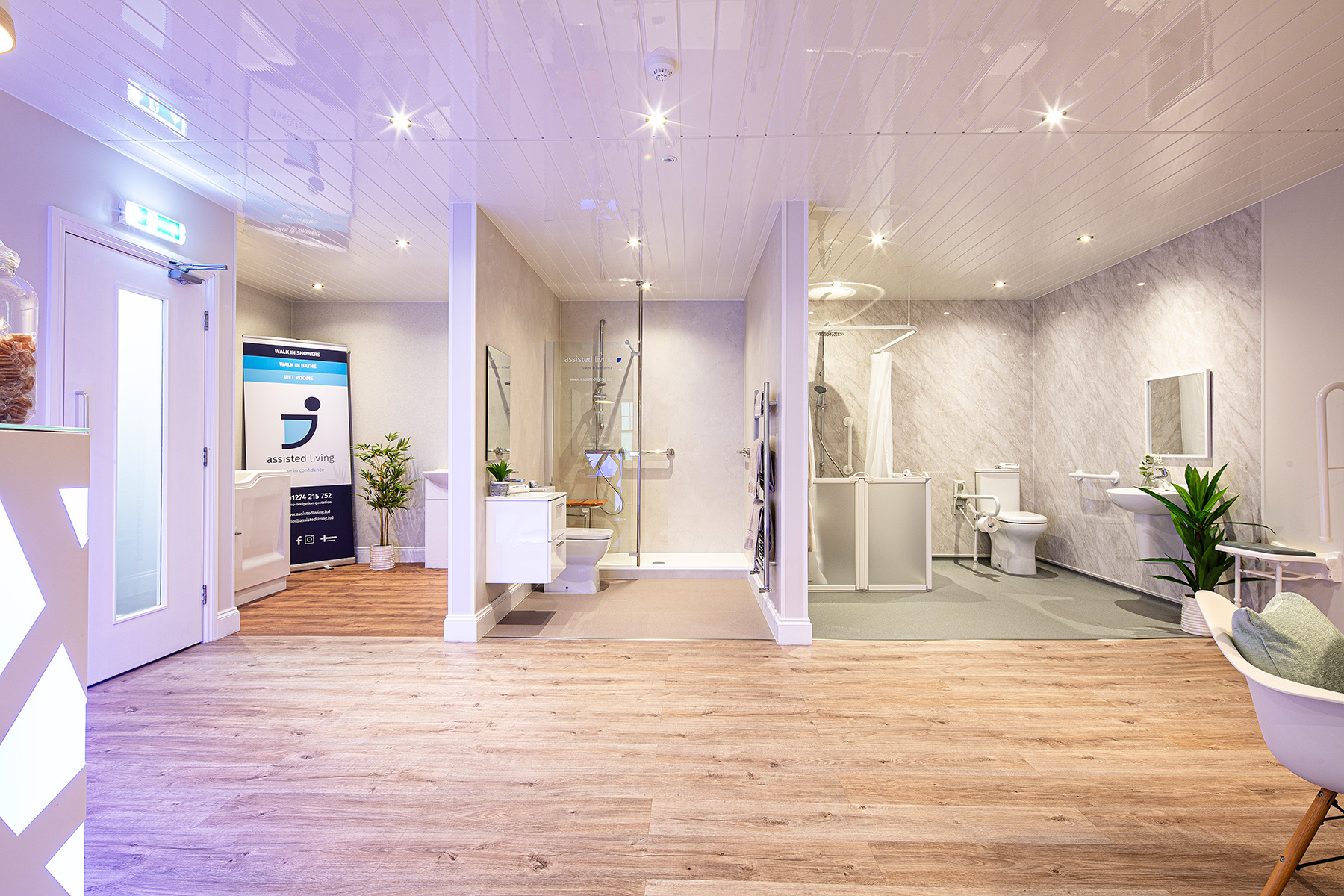
Walk-In Baths vs Walk-In Showers: Which Is Right for You?
When planning an accessible bathroom, one of the most important decisions you’ll face is whether to install a walk-in bath or a walk-in shower. Both are designed to make bathing easier and safer — but they offer very different experiences and suit different needs.
Below, we break down the key differences, advantages, and considerations for each option, to help you decide which is right for you or your loved one.
Walk-In Baths: What You Need to Know
A walk-in bath is a bathtub with a watertight door that allows users to step in over a low threshold, sit down comfortably, and enjoy a deep soak.
Ideal for:
People who prefer bathing over showering
Users who find a full-body soak relaxing or therapeutic
Individuals with enough mobility to sit down and stand up (unaided or with a seat/lift)
Key benefits:
Full soaking experience – provides warmth, comfort, and pain relief
Low entry threshold makes it safer than a standard bath
Often includes built-in seating, grab rails, and anti-slip flooring
Some models include spa jets, fast-fill taps, or temperature controls
Considerations:
You must get in and close the door before filling, and stay seated while it drains
Takes longer to fill and empty compared to showers
May not be suitable for users who cannot sit upright comfortably
Requires more floor space than a typical shower
Higher water use per bath compared to a quick shower
Walk-In Showers: What You Need to Know
A walk-in shower offers an open or semi-enclosed shower space with either level access or a very low step, designed for ease of entry and efficient washing.
Ideal for:
People with limited mobility or balance issues
Wheelchair users or carers who assist with bathing
Smaller bathrooms or users seeking quicker, simpler bathing routines
Key benefits:
Fast and efficient – ideal for daily use or multiple household users
Easy to access – often with level flooring and no door to open/close
Can be adapted with grab rails, fold-down seating, or shower stools
Suitable for carers to assist during bathing
Takes up less space – great for small bathrooms
Uses less water on average than baths
Considerations:
Doesn’t offer the same deep-soak comfort as a bath
Some users may feel cold without a fully enclosed space
Standing may still be difficult for some without seated support
May require alterations to existing drainage and flooring
What to Consider When Choosing
1. Mobility
If standing is difficult, both solutions can include seating — but walk-in showers are generally easier to access.
Walk-in baths require the user to remain seated during fill and drain times, which some may find uncomfortable or limiting.
2. Bathroom space
Smaller bathrooms often suit walk-in showers better.
Walk-in baths require more space lengthwise and may dominate the room.
3. User preference
Some people strongly prefer soaking in a bath, while others prefer the speed of a shower.
Comfort plays a big role – for muscle pain or arthritis, a warm bath may feel better.
4. Speed and convenience
Showers are quicker and often easier to use day-to-day.
Baths require more time for filling, bathing, and draining.
5. Assisted bathing
Walk-in showers allow carers to help more easily, especially with half-height doors or wet room configurations.
Baths may be trickier to access or assist unless hoists are installed.
6. Ongoing needs
If mobility is expected to worsen over time, showers tend to offer more flexibility for adaptation.
Future-proofing the bathroom should factor into the decision.
Still Can’t Decide?
In some homes, the right answer might be a combination:
A walk-in shower for everyday use, plus a bath elsewhere in the home
Or a hybrid walk-in bath-shower unit that offers both options in one
But if you have to choose just one, think about who will be using the space most, how their needs may change, and what setup will make daily life easier.
Final Thoughts
Choosing between a walk-in bath and a walk-in shower isn’t just about layout — it’s about safety, dignity, comfort, and independence. The best choice will always be the one that supports those priorities day after day.
If you’d like help designing an accessible bathroom tailored to your needs, get in touch to request a no-obligation consultation.






